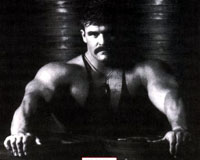The first incarnation of the tree is up. Please let me know if you spot any errors, or can provide any additional information regarding the families listed.
Results matching “Bird”
The first incarnation of the tree is up. Please let me know if you spot any errors, or can provide any additional information regarding the families listed.
Welcome to the new-and-improved Birds in the Tree site. For the past few days I've been adding/changing/deleting/rearranging/prodding and poking. There's plenty more to be added, but the time has come to re-open the doors.
Welcome to the new-and-improved Birds in the Tree site. For the past few days I've been adding/changing/deleting/rearranging/prodding and poking. There's plenty more to be added, but the time has come to re-open the doors.
The surname BIRD was first attached to an individual who lived by the sign of the bird; also to one who had the characteristics of a bird. The Irish word for bird is éan, and names such as O'Neny (sometimes O'Nena), among the chiefs of Moy Ith (County Derry, Ireland) and McEaneny have been Anglicised to Bird since colonists attempted to subjugate the Gaelic way of life. Also the French name L'Oiseau has been anglicised to Bird.
Hugh Le Bird (Hughe L'Oise or Lois or Layse) arrived in England with William the Conqueror in 1066 to fight at the Battle of Hastings. His surname is thought to have been derived from his skill at falconry. By the twelfth century the name LE BIRD was well established in England.
The earliest English Birds settled at Brexton or Braxton and at Chester in Cheshire. Many of the Bird descendants travelled to London about the beginning of the thirteenth century to learn trades, such as: silversmiths, goldsmiths, coppersmiths, silk weavers, etc. Some became merchants. A few became artists.
Sometime around the 15th century some families changed the spelling to Byrd. In fact there is at least one example of this taking place in the same family, with two brothers each selecting an alternate spelling. The reason for this is unknown.
Several Birds are listed in the Heraldic Visitations of Cheshire 1580, which also describe the Crest used by some Birds at that time.
The surname BIRD was first attached to an individual who lived by the sign of the bird; also to one who had the characteristics of a bird. The Irish word for bird is éan, and names such as O'Neny (sometimes O'Nena), among the chiefs of Moy Ith (County Derry, Ireland) and McEaneny have been Anglicised to Bird since colonists attempted to subjugate the Gaelic way of life. Also the French name L'Oiseau has been anglicised to Bird.
Hugh Le Bird (Hughe L'Oise or Lois or Layse) arrived in England with William the Conqueror in 1066 to fight at the Battle of Hastings. His surname is thought to have been derived from his skill at falconry. By the twelfth century the name LE BIRD was well established in England.
The earliest English Birds settled at Brexton or Braxton and at Chester in Cheshire. Many of the Bird descendants travelled to London about the beginning of the thirteenth century to learn trades, such as: silversmiths, goldsmiths, coppersmiths, silk weavers, etc. Some became merchants. A few became artists.
Sometime around the 15th century some families changed the spelling to Byrd. In fact there is at least one example of this taking place in the same family, with two brothers each selecting an alternate spelling. The reason for this is unknown.
Several Birds are listed in the Heraldic Visitations of Cheshire 1580, which also describe the Crest used by some Birds at that time.
 JM Blakley is well known in powerlifting circles for bench-press abilities, and the JM Press is a magnificent tricep building exercise to help with this particular lift.
JM Blakley is well known in powerlifting circles for bench-press abilities, and the JM Press is a magnificent tricep building exercise to help with this particular lift.
Technique
The JM Press is similar to both a close-grip bench press and triceps extension (aka French Press), and lies inbetween them. Think of it as a close-grip bench in which the bar is brought to a point just above the upper chest/lower face (the length of your arms will determine this). The upper arms are kept at a 45 degree angle from your torso.
NB : The bar should move in a straight line up and down. In order to minimise shoulder involvement (and keep the workload on the triceps, as designed), keep the elbows tucked in. The bar is raised by straightening the arms, not by pushing with the shoulders.
See also
Official site
www.jmblakley.com. Currently disabled.
Videos
Building the Perfect Beast
XTM Bench
Technique
Westside Barbell's Jim Wendler clarifying JM Press technique
Articles
J.M. Blakley's Top Tips For The Bench Press
Blakley's 4×6 bench program



